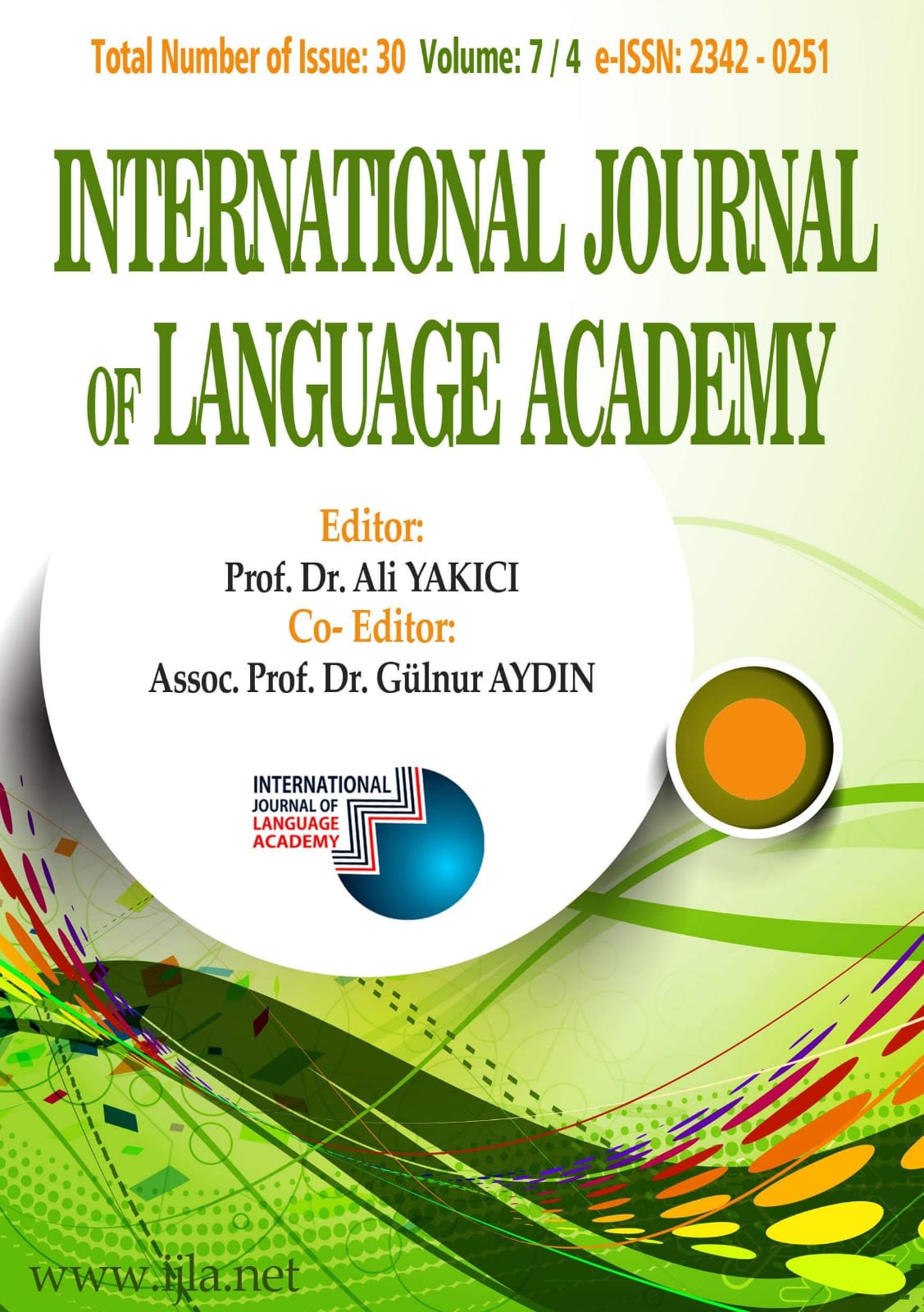Gürcü Yazar Akaki Tsereteli’nin “Başi Açuki” Adlı Tarihi Hikâyesinin Türkçedeki İki Çevirisinin Karşılaştırmalı Analizi
Author :
Abstract
Gürcü edebi ve toplumsal yaşamında 19. yüzyıl önemli bir yer tutmaktadır. Bu dönemin Gürcü toplumsal yaşamında, şiirinde, düzyazısında öneme sahip Yeni Gürcü edebiyatının ve dilinin kurucularından biri de Akaki Tsereteli’dir. Akaki Tsereteli halkın öyle bir sevgisini kazanmıştır ki “Gürcistan’ın taçsız kralı “, Gürcü bülbülü” olarak adlandırıyorlardı. Bir yazarın bu ölçüde sevgiyle yaşamı boyunca onurlandırılması bir insanda çok nadir karşılanır. Bu çalışmada 19. yüzyılın önemli yazar ve şairlerinden biri olan Akaki Tsereteli’nin 1896 yılında yazdığı “Başi Açuki” adlı tarihi hikâyesinin Türkçedeki iki farklı çevirisini ele almayı ve çeviri süresince çevirmenlerin kullandığı stratejiler ve verdiği kararlar çerçevesinde çeviri kuramcılarının bilgileri kapsamında incelemeyi amaçlamaktadır. İlk olarak çeviri, çeviri stratejileri, romanın konusu, roman yazarı ve çevirmenler hakkında kısa bilgi verilmiş, ikinci bölümde de kaynak metinden alınan ifadeler erek metinlere nasıl aktarıldığını çeviri kuramları çerçevesinde karşılaştırmalı olarak ele alınmıştır. Böylece çevirmenlerin çeviri esnasında hangi çeviri stratejilerini kullandıkları ve kaynak metne uyum sağlayıp sağlamadıkları üzerinde durulmuştur. Çalışma sonucunda her iki çevirmen arasında farklılıkların söz konusu olduğunu ve farklı stratejiler kullandığını söyleyebiliriz. Ayrıca Gürcüceden Türkçeye çevrilen eserlerde hangi yöntemlere başvurulduğu belirtilmiştir. Genel olarak ele aldığımızda, Çeviri 2’ in Çeviri 1’ e kıyasla, erek odaklı bir çeviri yaklaşımı izlediğini, çevirisinin kabul edilebilir bir çeviri olduğu sonucu tespit edilmiştir.
Keywords
Abstract
The 19th century has an important place in Georgian literary and social life. Akaki Tsereteli is one of the founders of the New Georgian literature and language, which is important in the Georgian social life, poetry, and prose of this period. Akaki Tsereteli gained the love of the people that they called the crownless king of Georgia “as the Georgian nightingale. It is very rare for a human being to be honored to such extent by the love of another author throughout his life. This study aims to examine two different translations of the historical story of “Başı Açuki” written by Akaki Tsereteli, one of the important writers and poets of the 19th century, in Turkish. It is also aimed to examine the translation within the framework of the strategies used by the translators and their decisions during the translation process in the context of translation theoreticians’ knowledge. First of all, brief information about translation, translation strategies, theme, author, and translators were given. In the second section, how the expressions obtained from the source text were transferred to the target texts was discussed comparatively within the framework of translation theories. Thus, it was emphasized what translation strategies the translators used during translation and whether they adapted to the source text. As a result of the study, we can say that there are differences between the two translators and they use different strategies. Also, it is revealed which strategies are used in translations from Georgian to Turkish. All things considered, it may be concluded that Translation 2’, compared to Translation1’, is closer to the target language, and it aims to make its translation acceptable in the target language.
Keywords
- Aktaş, T. (1996). Çeviri işlemine Genel Bir Bakış. İstanbul: Yapı Kredi Yayınları.
- Odacıoğlu, M. C., Çoban, F. (2017). Tıp Metinlerinin Çevirisinde Çevirmenlerin Kullanabilecekleri Yöntem ve Stratejiler. Turkish Studies. Volume 12/22, s. 545558.
- Odacıoğlu, C. Barut, E. (2018). Çeviri Usul, Strateji ve Yöntemleri Üzerine Bir Derleme. Tarih Okulu Dergisi, Sayı XXXIV, 1363-1392.
- Hinkiladze, H. (1979). Başı Açuki. Çveneburi Kültürel Dergisi, N. 5-6, 23.
- Pancikidze, D. (1988). თარგმნის თეორია და პრაქტიკა / Targmnis Teoria da Praktika (Çeviri Teorisi ve Pratiği) . Tiflis: Tiflis Devlet Üniversitesi Yayınları.
- Tanrıkulu, L. (2018). Gideon Toury’nin Erek Odaklı Çeviri Kuramı Işığında Memduh Şevket Esendal’ın Ayaşlı ve Kiracıları Adlı Romanının Almanca Çevirisinin İncelenmesi. Turkish Studies. Volume 13/20, s.687-700.
- TDK. (2011). Türkçe Sözlük. (11. Baskı). Ankara: Türk Dil Kurumu Yay.
- Vardar, B. (1978). Çeviri Konuşmaları. (Sayı 2). Yazka Çeviri Yayınları.
- Vardar, B. (1978). Dilbilim açısından çeviri. Türk Dili Çeviri Sorunları Özel Sayısı, 67.
- Yalçın P. Özcan O. (2013). Çeviri Stratejileri ve İşlemleri Açısından Uyumsuz (Absürd) Bir Oyunun Türkçe’ye Çevirilerinin İncelenmesi: “Le Roi Se Meurt. 13. Uluslararası Dil Yazın ve Deyişbilim Sempozyumu: Basit Üslup (Bildiri Kitabı). Kafkas Üniversitesi, s. 681-692.
- Yalçın, P. (2015). Çeviri Stratejileri Kuram ve Uygulama. İstanbul: Grafik Ofset Matbaacılık.





